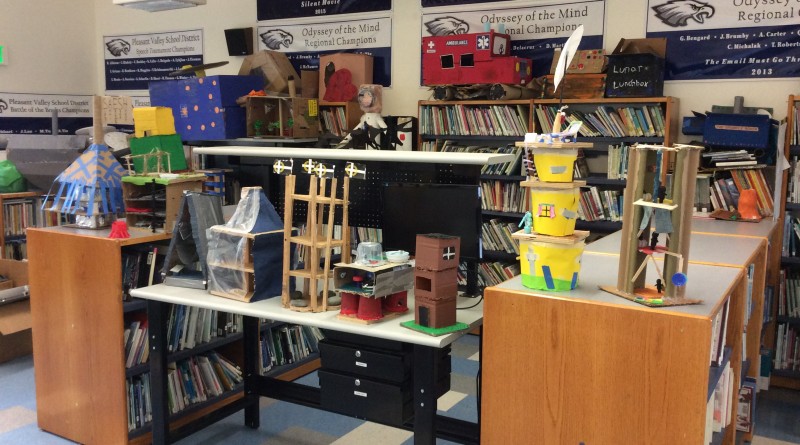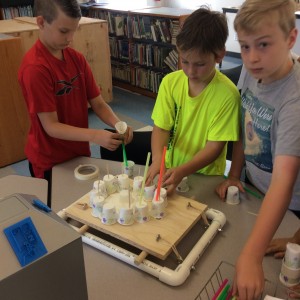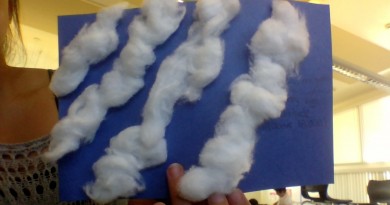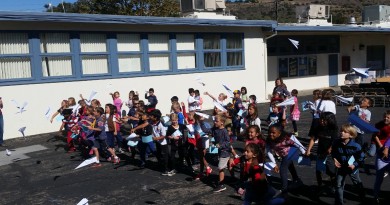Earthquake Proof Houses
Objective:
Build a three story house that will be structurally sound enough to withstand “the big one”
NGSS Standards:
MS-ESS3-2 Analyze and interpret data on natural hazards to forecast future catastrophic events and inform the development of technologies to mitigate their effects.
MS-ETS1-2 Evaluate competing design solutions using a systematic process to determine how well they meet the criteria and constraints of the problem.
Overview of Lesson:
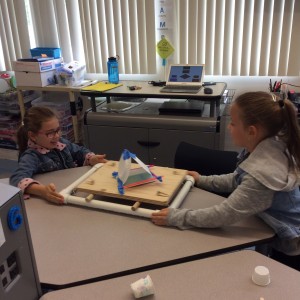
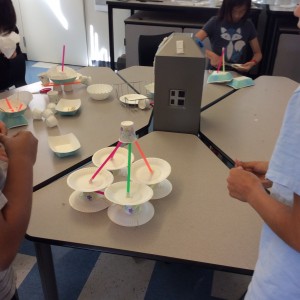
Students designed and built a three story structure that would withstand an earthquake. I provided links of resources but many students chose to experiment with trial and error to build a sturdy structure. The buildings were tested on earthquake “shake tables” and on jello for the final test. 6th grade students could use any materials they wished. Elementary students used paper plates, straws, sandwich picks, and tape. At the end of the building time for both groups, students tested out their houses on earthquake tables in front of the whole class. The 6th grade students evaluated the houses for sturdiness before and after the simulated earthquake.
Assessment/Scoring:
Student projects were scored on a 4 point rubric (Exceeds, proficient, minor, major, and missing). Categories for scores included:
- Followed all instructions and guidelines
- Thought & creativity in designing and building house
- Effort during class in designing and building house
- House survived the earthquake
- Feedback during the presentations- Quality of responses and quantity returned
- Reflection Survey- completion and quality
Student samples:
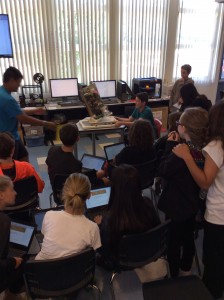
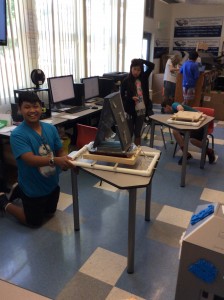
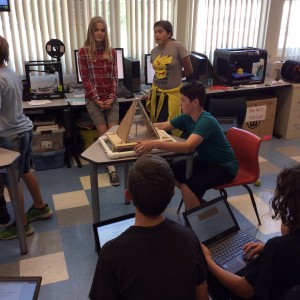
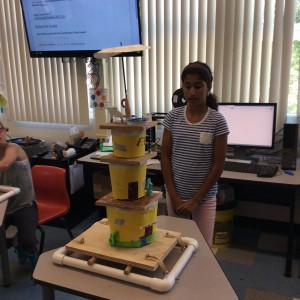
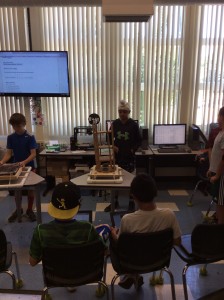
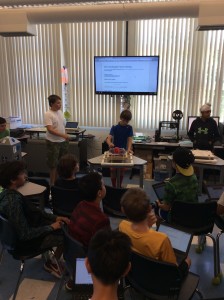
Conclusions/Reflections for the Future:
I’ve done an earthquake building project nearly every year that I have been teaching science. For my first three years, this was a build at home project which students had to bring in on a specific day and test out. Last year I did not do this project because my initial reading of the NGSS standards was that earthquakes had been dropped from 6th grade. Therefore my entire earthquake unit was one day telling students how to protect themselves in the event of a quake. This year I reexamined and found that the natural hazards standard does include language about earthquakes and above all, students who live in California really need to know about earthquakes. This is a topic that I’m willing to spend more time on because it really could end up being a topic of life or death for them.
The students went through a variety of activities on earthquake terminology, determining an epicenter, and were responsible for preparing their own household for an earthquake. The purpose of the earthquake house assignment was for them to learn more about what engineers have to do in California in order to prepare for an earthquake. Since I had been talking about earthquakes quite a bit, I decided to expand my earthquake engineering lesson down to the elementary students as well. I did a brief overview of earthquakes with them and then had them build a sturdy structure in about 20 minutes. After a year of makerspace and building, there were actually some impressive designs from students at all levels. I really emphasized that they would need to build a little and then test their building to see what needed to be fixed or improved.
While doing these lessons with the elementary students, I had the epiphany that I was doing everything wrong for the 6th grade student projects (which were already completed by this point). The 6th graders spent weeks building their houses, figuring out the building materials (including how to saw wood) and decorating their designs only to have the entire thing fall apart and crash during the demonstration. While the crashing was spectacular (and a gigantic mess), I realized that they really didn’t get the learning out of this project that I wanted. I would have much preferred to have less decorated buildings that actually withstood the shaking.
In the feedback from the students on this project, one students said that she wished her group had tested their houses more, which really was the whole problem with this assignment. The students were much more focused on the construction and building than on the earthquake mitigating design. At the end students reported learning “my house fell over”, not the physics behind why some designs succeeded. The verdict is that students who are left on their own to build will build straightforward three story houses which do not necessarily have any real reasoning behind their design choices. There are all sorts of technologies with counter weights and rolling methods out there that engineers have used but very few students actually looked into or utilized those ideas. Looking back, I’ve had a few houses on springs but never a house with any realistic examples of what engineers have tried. However, one obstacle to this is that the buildings for this project cannot have an underground foundation or any sort of anchoring method due to the shake tables we use.
In a nutshell, this assignment needs an overhaul. I do want to continue this activity, but I need to do a better job of guiding students toward the goal of learning about earthquake safe construction. I’m thinking this needs to start with researching existing buildings and the variety of methods used to protect them. This could be followed by an engineering play day where students are encouraged to use straws etc to test out a rough design prototype without committing to more durable materials. Going through the research and development phases would be truer to the engineering design process and I do hope would yield more creative and structurally sound final buildings. Next year’s 6th graders did the elementary lesson with me this past year so I’m curious to see if they come in already with more awareness of the possibilities than my previous students.
Digital Resources:
Elementary Earthquake Presentation
Idea Sources:
University of Buffalo SEESL.Buffalo.edu MCEER
NPR- How to Build an Indestructible Gingerbread House
